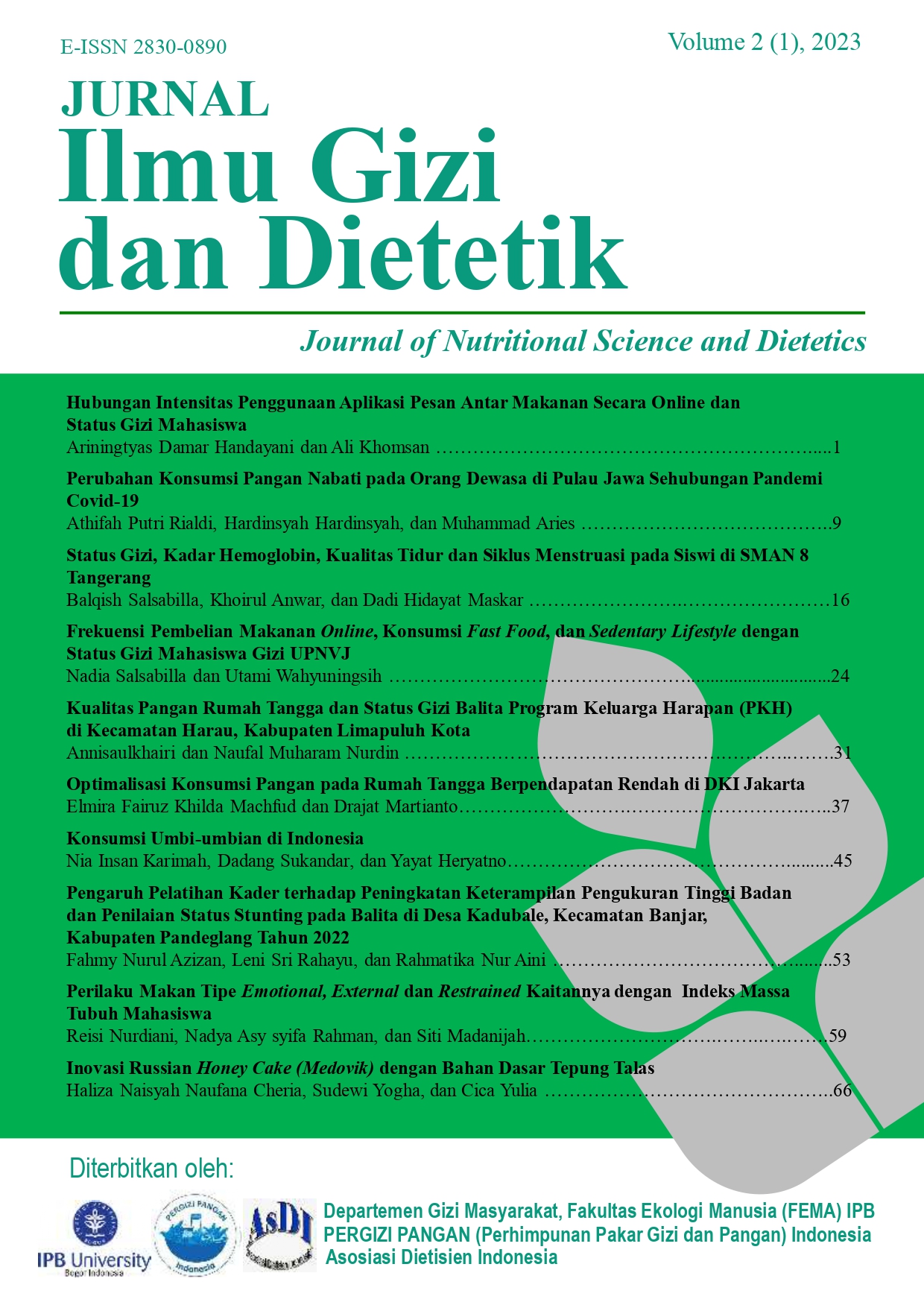Perubahan Konsumsi Pangan Nabati pada Orang Dewasa di Pulau Jawa Sehubungan Pandemi Covid-19
Abstract
The Covid-19 pandemic has caused restrictions on the mobility of people and goods and reduced people's access and purchasing power to fulfillment of basic needs, including food. This study aims to analyze changes in the consumption of plant foods by women and men in Java related to the Covid-19 pandemic. The research design used is an online cross-sectional survey using google forms through the Kudata and social media. The total number of final subjects was 2040 adults consisting of 1773 women and 267 men. The consumption of plant foods is grouped into staple foods, legumes, vegetables, and fruit. Changes in vegetable food consumption are differences in the amount of each plant food group consumed based on the subject's perception qualitatively (increase, not change, or decrease) during the pandemic compared to before the pandemic. The Mann-Whitney test was applied to analyze changes in plant food consumption. The results showed that there was a significant increase in both women's and men’s (p<0.01) consumption of plant food groups, including staple foods, legumes, vegetables, and fruit. The highest increase in consumption of plant foods for each food group was rice, soybean, spinach, and
banana respectively. The lowest increase in consumption of plant foods for each food group was corn, red bean, cucumber, apple, and pear respectively.


